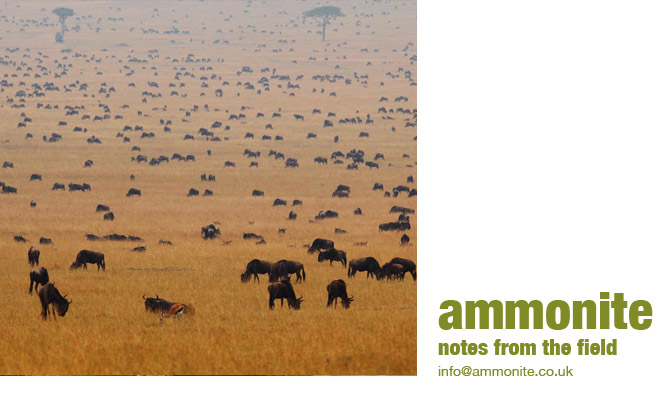
I wasn’t prepared for the drive to the Mara. The last time I drove was in 1984 – ever since then, I’ve flown. The air route goes over some dramatic rift valley scenery, then a bit of semi desert before arriving at the relatively green oasis of the Western Mara.
The land route is completely different, and has to take a Northward direction before heading south to the plains. In 1984, I remember seeing giraffes and gazelles less than an hour out of Nairobi. This time, at the same place all we found was one roadkill zebra being eaten by dogs. Another hour down the way, the transformation was even more complete. What was scrub and dry empty plains 25 years ago is now endless fields of wheat. What was a significant wildebeest and zebra migration route is now the breadbasket of Kenya – if not much of East Africa.
As we drove South to Aitong, it was clear that the number of people and cattle living here had increased enormously. As we got close to the Mara reserve, we could see that a huge number of cows, sheep and goats had cropped the grass to the limit. But as is often the case here, we could also see huge numbers of wildebeest surrounding the cattle, drawn to the fresh green growth – which is in part due to the intensive domestic stock grazing (much of which has been brought here from other areas – because of drought, this is the only grass in Kenya). Whether or not we find more predators in the areas where there are most wild animals (often where there are cows and Masai) or where there is less disturbance from people remains to be seen. Watch this space.









